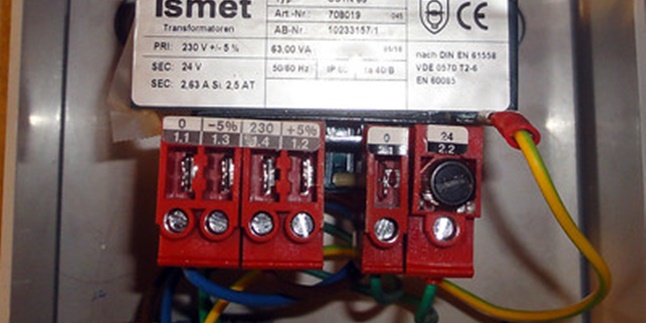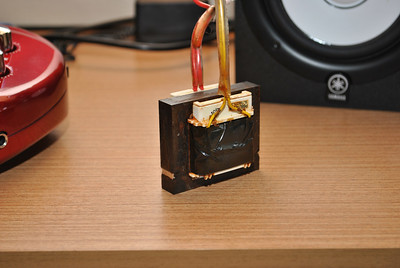10 Causes of Snoring or Snoring During Sleep Unconsciously
There are various causes of snoring during sleep unconsciously. In some conditions, snoring can even make someone easily wake up.

Kapanlagi.com - Electricity has become a daily necessity for the general public. Various human activities today also rely heavily on electricity. Unfortunately, electricity often experiences disturbances, even often interrupted. Therefore, it is important to master electrical equipment. Transformer is one of these electrical tools.
A transformer, or more commonly known as a transformer, is a device closely related to electrical power. A transformer is an electrical device used to increase or decrease the power voltage of a machine. Transformers may not be something we encounter every day. However, it is important to know how this object works.
Summarized from liputan6.com, here is an overview of the transformer.

(credit: flickr)
A transformer is an electrical device that is related to power voltage. In an electrical installation, a transformer will convert electrical power from one circuit to another circuit, thus increasing or decreasing the voltage of electrical power in a machine.
Transformers generally consist of two coils wound around an iron core as a magnetic field. In the market, we can find transformers that use Alternating Current (AC) electrical energy, or alternating current.
As mentioned earlier, transformers generally function to change the path or circuit of electrical power. In addition, transformers also have the function of increasing or decreasing the voltage of electrical power in a machine. These things are done by transformers by applying the principle of electromagnetic induction.
The alternating input voltage will produce a magnetic flux connected to the secondary winding. The flux with the alternating path will then induce an electromotive force (emf) in the secondary winding. If it runs smoothly, the power in the primary winding will also be transferred to the secondary winding.

(credit: flickr)
The working principle of a transformer is actually relatively simple. By applying the principles of electromagnetism, transformers utilize mutual induction between the primary and secondary windings. The alternating current from the windings then generates flux around the primary winding, which can vary.
Meanwhile, the secondary winding of the transformer is also connected to the primary winding. This is due to the fact that some of the alternating flux remains connected to the primary winding. The changing flux then induces an electromotive force (EMF) in the secondary winding.
This is explained by Faraday's law of electromagnetic induction. It states that an EMF will be induced in the primary winding. When the winding is closed, electric current will flow. However, it is important to note that transformers do not require moving parts to generate energy. Therefore, there is a possibility of friction with other electrical machines.

(credit: flickr)
Transformator is an electrical equipment that plays a vital role. Generally, there are several types of transformers with different characteristics. The types of transformers are as follows.
1. Step-Up Transformer
The first type of transformer is the step-up transformer. This type of transformer is used to increase the electrical voltage and adjust it to the needs of electronic machines. Step-up transformation has more secondary windings than primary windings, so it functions as a voltage booster.
2. Step-Down Transformer
Step-down transformer is a type of transformer that can be used to reduce the voltage at the output. Step-down transformer has fewer secondary windings than primary windings, so it can lower the electrical voltage.
3. Autotransformer
Autotransformer is a transformer that only has one electrical winding, with a tap in the middle. Autotransformer has some primary windings that also function as secondary windings. Autotransformer has the advantage of having a small physical size, but on the other hand, this type of transformer is also lower than the two-winding type.
4. Variable Autotransformer
Variable autotransformer is actually a regular autotransformer, as explained earlier. However, variable autotransformer has a variable tap in the middle. This will result in a variable primary-secondary winding ratio.
5. Three-phase transformer
A three-phase transformer is three transformers that are specially connected to each other.The primary winding of this transformer is usually connected in a star (Y) configuration, and the secondary winding is connected in a delta configuration.
6.Isolation transformer
An isolation transformer is a transformer designed specifically to provide pulse wave output. Therefore, this transformer is also often called a pulse transformer. The isolation transformer uses a core material that is easily saturated. So, when the primary current has reached a certain point, the magnetic flux automatically stops changing.
Those are some reviews about transformers, which are electrical devices that function to convert electrical power. Hopefully, it is useful and adds knowledge.
(kpl/psp)
Cobain For You Page (FYP) Yang kamu suka ada di sini,
lihat isinya
There are various causes of snoring during sleep unconsciously. In some conditions, snoring can even make someone easily wake up.
Here are 20 collections of Sapardi Djoko Damono's poems that touch the heart, about life to romance. Let's check it out, KLovers.
This is the cause of swollen heart that needs to be aware of the symptoms as early as possible to prevent further risks.
Swollen heart or known as cardiomegaly is a condition that occurs when the heart enlarges or swells due to certain factors
In general, temporal conjunctions are one type of linking words. Learning temporal conjunctions is very important. Because, temporal conjunctions will greatly help a reader or listener in understanding a sentence.
Although providing many benefits with advanced features, several problems can arise, one of which is a phone getting hot quickly. This is because a phone can get hot due to various triggering factors.
Conflicts can occur due to differences in interactions that cause disagreements. To delve deeper, this article discusses various types of conflicts, their causes, and examples in life. What are they?
These are the extraordinary benefits of chlorophyll for your body's health. What are these benefits? Let's check it out, KLovers.
Gerd is a type of disease that can happen to anyone. Therefore, it is important to equip yourself with knowledge about gerd.
Visual arts is a type of art where the works appear in the form of concrete objects. This means that the elements of visual arts can be enjoyed through sight and touch. How about a more detailed explanation?
Here are some benefits of reading Surah Yasin if read regularly. What are those benefits? Let's check it out KLovers.
Here are 65 stupid questions that will make you think hard and laugh out loud. What are some of these stupid questions? Let's check it out KLovers.
What if frequent flatulence actually disrupts activities and becomes a sign of certain health problems. These are the causes of frequent flatulence that occur due to various factors.